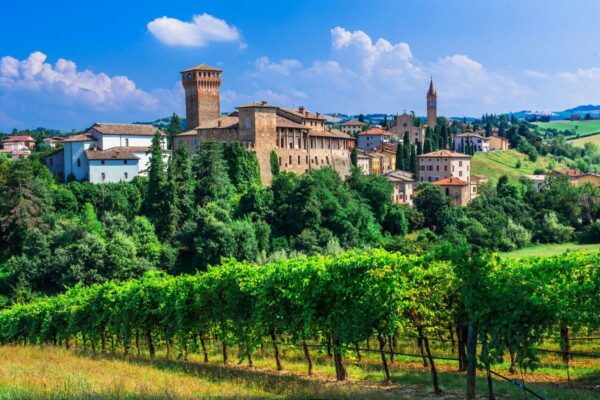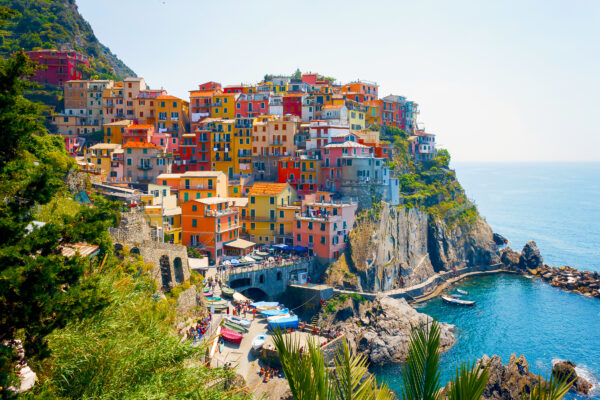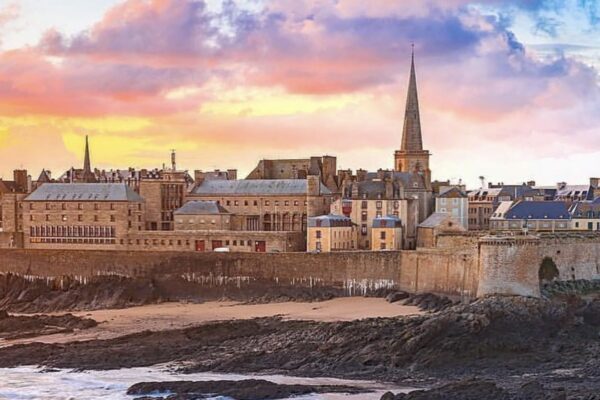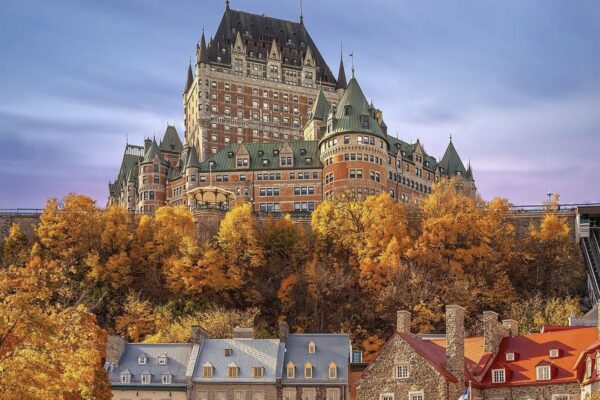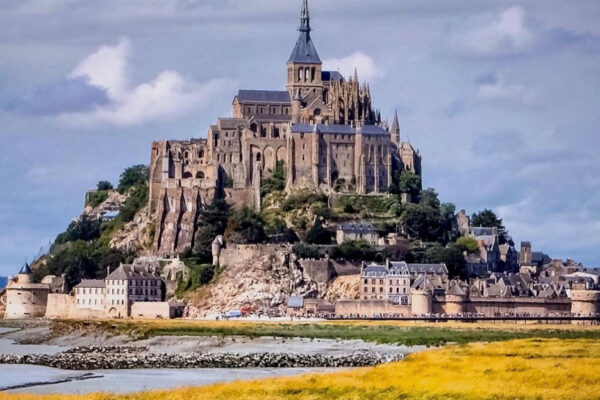Bountiful Tuscan Coastal Wines
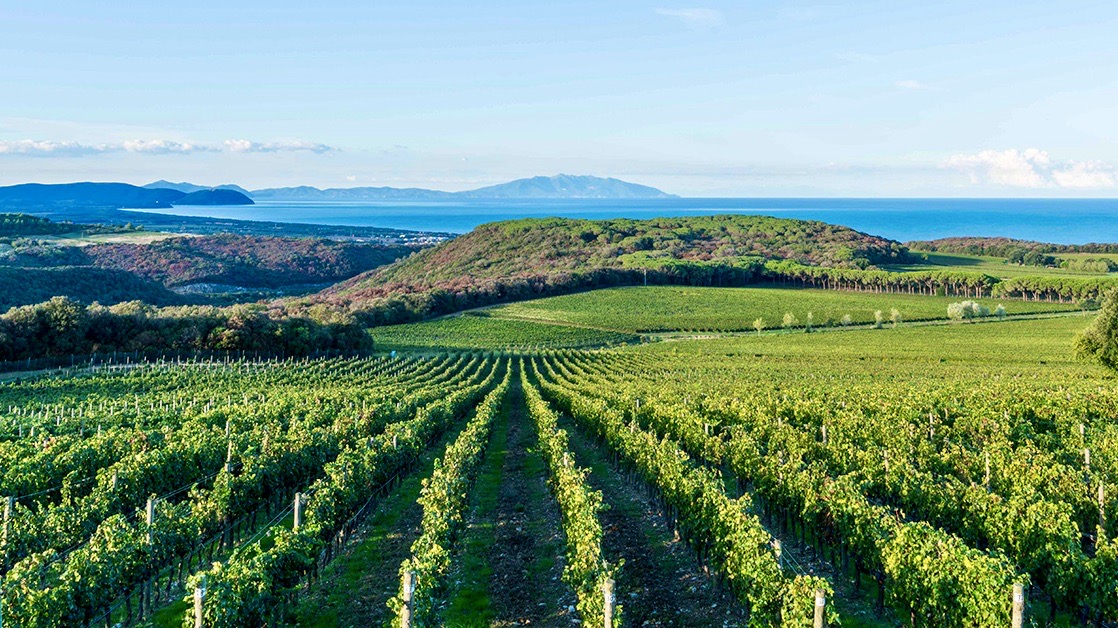
by Michèle Shah, CEO of Michèle Shah Travel & Michèle Shah.com
No other Italian wine producing region in Tuscany has evolved as dynamically as Bolgheri, known especially for its elegant supertuscan blends, situated on Tuscany’s coastline, just south of Livorno. Bolgheri has seen unprecedented levels of interest in recent years, not only for its wines but also for its beauty and wealth of tourism.
Bolgheri is part of the Tuscan Maremma coastline which was once a swampland and only completely drained in the 1930s. Nobody really expected for its fertile, alluvial soils to be so conducive to grapevine cultivation—and not just any, but French varieties such as Merlot and Cabernet Sauvignon which have been planted in the area since the 1700s. Napoleon’s exile to the nearby island of Elba in the early 19th century further encouraged the planting of French cuttings, which adapted magnificently to the soils. Quite ironic when you consider the rivalry between the French and the Italians, especially when it comes to wines.
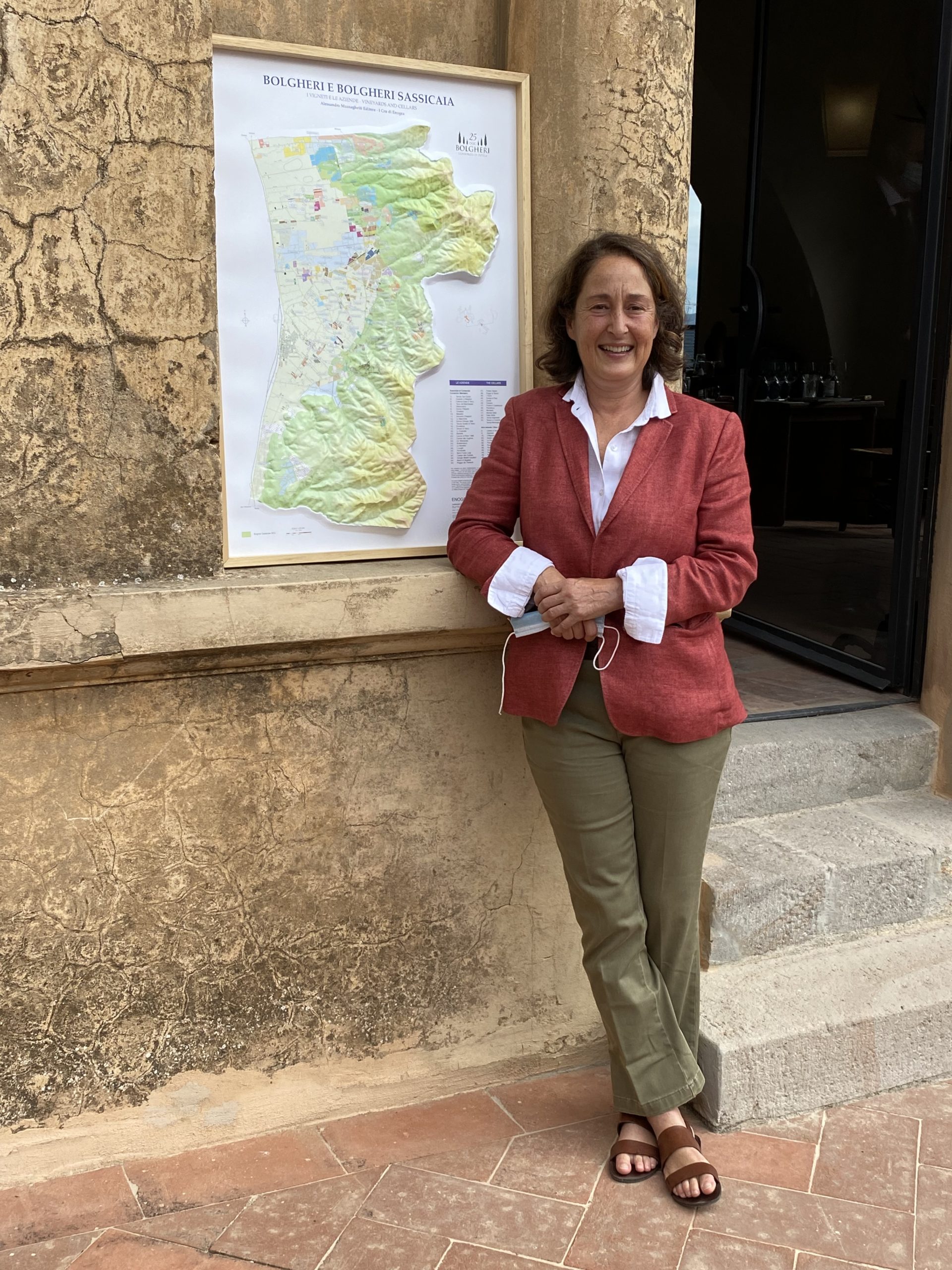
Albiera Antinori President of the Consorzio DOC Bolgheri & Sassicaia as well as President of Marchesi Antinori which owns one of the largest and most historic estates’ of Bolgheri – Guado al Tasso. Photo by Michèle Shah.
The Marquis Mario Incisa della Rocchetta founder of the estate Tenuta San Guido in Bolgheri, inspired by the wines of Bordeaux, was responsible for the ‘breakaway’ with tradition in grape variety. Cabernet Sauvignon vines were imported directly from Bordeaux and the wine was aged in French barriques.
Every other wine in Tuscany was at the time aged in large Slovenian oak casks. Sassicaia became the model for Piero Antinori’s Tignanello, the first of its kind in 1971, which was based almost entirely on the Sangiovese and was aged in barriques (later on the Cabernet Sauvignon was added) and then Solaia. Sassicaia and others like it gave rise to the Bolgheri DOC which lies in the municipal territory of Castagneto Carducci.
Sassicaia’s name (“stony field”) alludes to the banks of gravel in the area, reminiscent of vineyards in the Graves and the Haut-Médoc, which inspired the French wine loving Marchese to plant Bordeaux varieties – particularly Cabernet Sauvignon and Cabernet Franc – rather than Sangiovese.
In the 1980s, Lodovico Antinori began planting on his neighboring Ornellaia estate. An area of clay within this estate was planted with Merlot and became the separate Masseto property. The sunny, dry and breezy climate of Bolgheri and the stony soils with clay patches have attracted further vineyard expansion mostly focusing on red Bordeaux varieties.
Le Macchiole was one of the first to adopt Bolgheri’s viticultural model, purchasing their first 4 ha of vineyard in 1983. Today the estate’s 27 ha of vineyard and 190,000 bottle production is managed by a large professional team of staff, headed by Cinzia Merli and her two sons.
Merli was preceded by talented winemaker Eugenio Campolmi, who unfortunately passed away in 2002. Campolmi was one of the first to appreciate the potential of bottling single varietals of Syrah and Cabernet Franc. Today the winery exports some 70% of production and in addition to the Bolgheri Rosso, Le Macchiole produces three top labels each 100% monovarietals: Scrio 100% Syrah; Messorio 100% Merlot and the flagship label Paleo 100% Cabernet Franc.
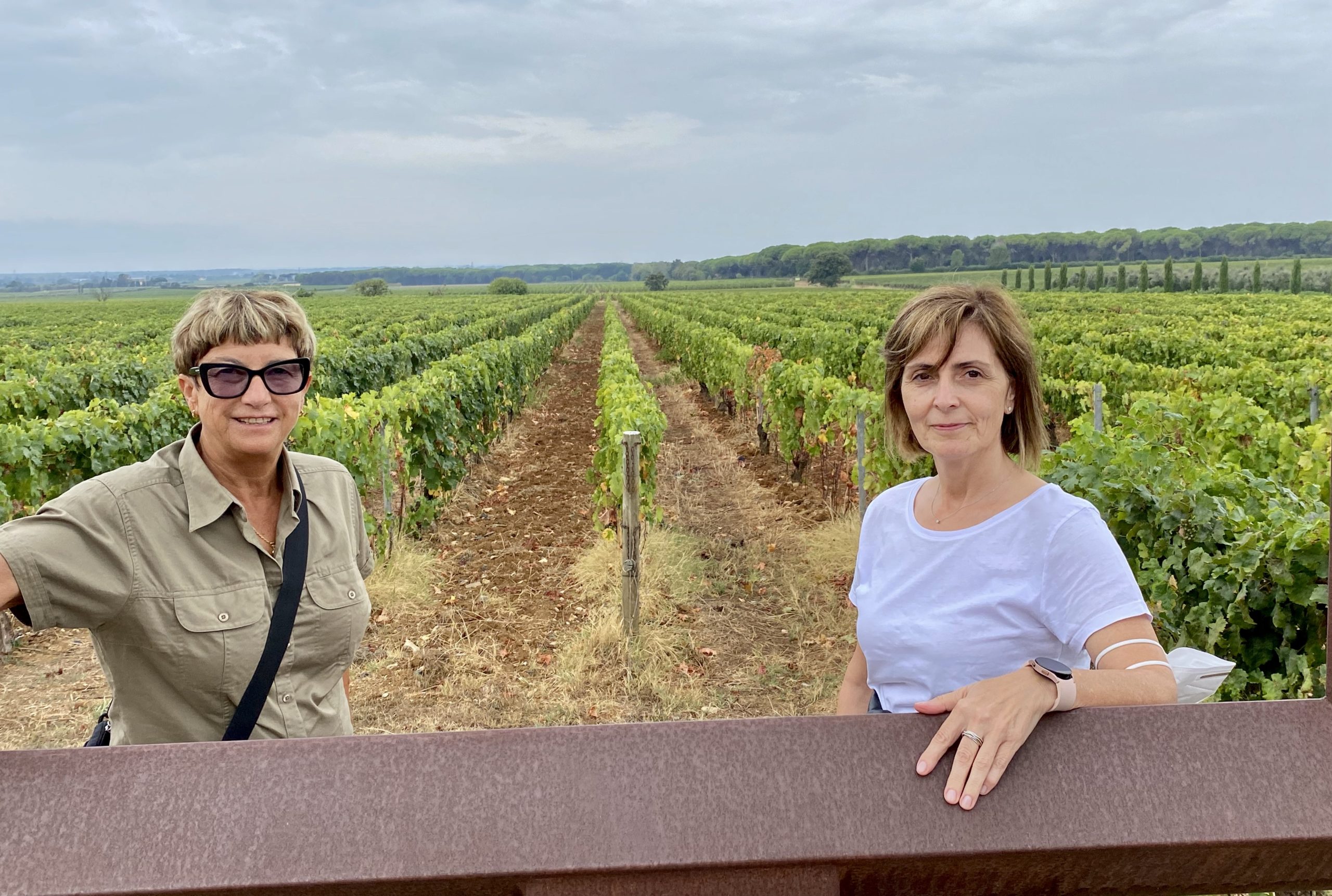
Michèle Shah with Cinzi Merli, at Le Macchiole. Photo courtesy of Michèle Shah.
More recently, since the late 90’s new investments have been made by producers from other Italian winemaking regions. Notable names such as Banfi from Montalcino founding Le Bozze estate west of the Via Bolgherese, Marilisa Allegrini from Veneto founding the Poggio al Tesoro estate in Bolgheri. Angelo Gaia from Piemonte founding one of the larger 120 ha estate Ca’ Marcanda, which extends from Bolgheri to Bibbona.
An important share of production originates from a segment of family run estates such as Donne Fittipaldi, owned by Maria Fittipaldi Menarini, part of the Gruppo Menarini Farmaceuticals. Fittipaldi Menarini fell in love with Bolgheri in the 90’s and today manages the property with her four daughters, while production is overseen by winemaker Emiliano Falsini.
Whether it be foreign investments such as Campo alla Sughera purchased by the Knauf family or producers from northern Italy, such as Franco Ziliani owner of Berlucchi from Franciacorta, who founded Caccia Al Piano, the beauty of the area and the potential of its wines has attracted many from far and near.
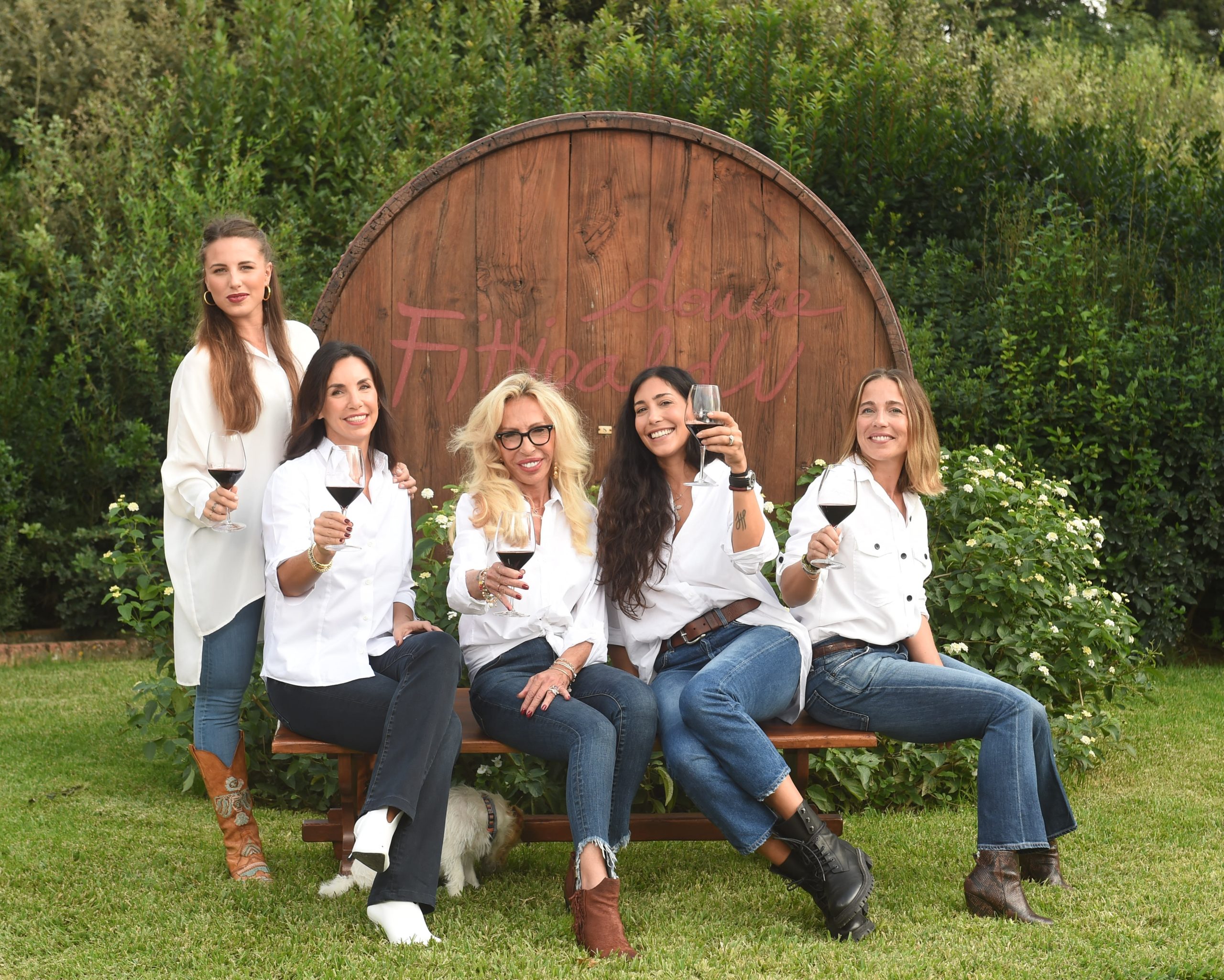
Maria Fittipaldi Menarini manages Donne Fittipaldi along with her daughters. Photo courtesy of the Fittipaldi Estate.
Bolgheri wines are famous for expressing terroir, reflecting the land they come from. The sea is one of the place’s defining characteristics. The land basks in ample light from the sun and its brilliant reflections off the ocean, enjoys fabulous coastal weather, enjoying the sea breeze that ventilates the vines and mitigates the temperatures. Vineyards are wedged in between wooded hillsides and ancient olive groves, and soils are alluvial and rich in minerals, sand, limestone, clay, pebbles, and volcanic rock in the east. This sunshine and maritime influence can be found in the intense, red wines.
Bolgheri’s red wines are generally a blend of Cabernet (Sauvignon or Franc) and Merlot, often with additions of Syrah, Petit Verdot and, on rare occasions, Sangiovese. Over recent years producers are increasingly crafting some of their top labels as monovarietal wines using one of the three main grape varieties: Cabernet Sauvignon, Cabernet Franc, Merlot. The wine production is of high quality and the best reds show great intensity and great aging potential.
Bolgheri’s production distinguished by aromas of sweet, ripe dark fruit with balsamic notes of Mediterranean scrub, is characteristic of Bolgheri’s terroir. On the palate they are round and supple showing a sweetness of fruit which is perceived in the mid-palate. The wines are vibrant with fresh acidity showing a silky, dense tannic texture and a generous, long finish, often marked by savory notes that evoke the saltiness of the nearby sea. Despite a relatively firm structure, the wines are mostly characterized by balance and harmony.
Bolgheri Superiore and Bolgheri Sassicaia DOC labels represent some of the highest quality of production followed by Bolgheri Rosso. On the whole the wines are extremely pleasant and drinkable. Their soft, elegant character is defined by shorter periods of aging in wood or in some cases no contact with wood.
The two most noteworthy white varieties to be planted are Sauvignon Blanc and Viognier which traditionally do not have contact with wood, in order to obtain a fresh, fruity character in line with market requests. As to rosés, while traditional production relied mainly on Sangiovese, today’s wines are derived from the same international varieties that are used for red wines. These are wines crafted to express varietal character and easy drinkability, very similar in nature to Vermentino production.
When it comes to winery visits, be sure to book them. Unfortunately, it is not possible to visit Tenuta San Guido (Sassicaia), but it’s well worth visiting the Osteria San Guido where you can eat hearty Tuscany food and sample Tenuta San Guido and Bolgheri wines as well as buying vintage bottles of Sassicaia. Other notable estates such as Ornellaia, Guado al Tasso, Grattamacco, Le Macchiole and Michele Satta all need to be booked well in advance.
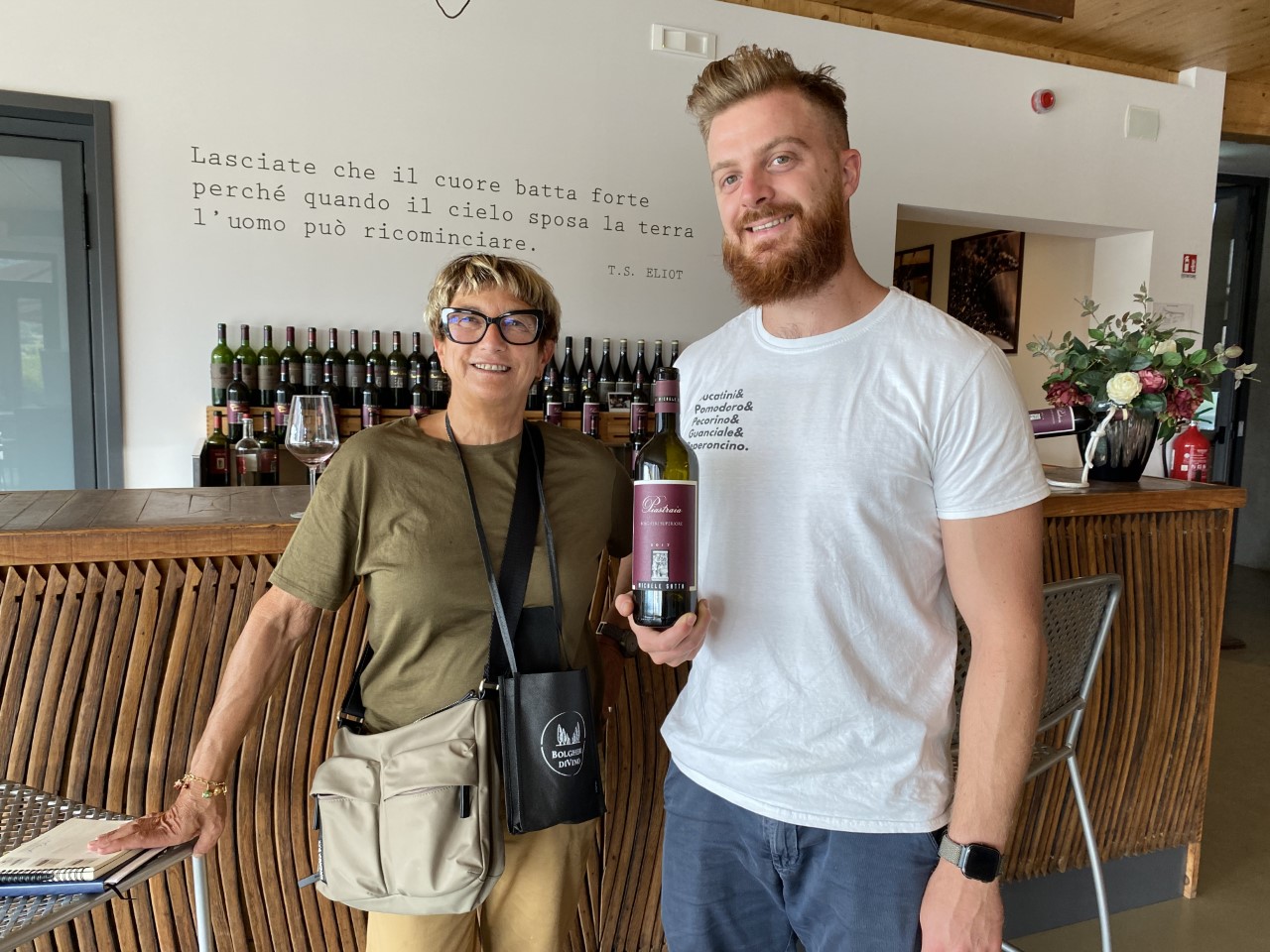
Michèle Shah at Michele Satta estate with Giacomo Satta (Michele’s son – new generation winemaker of the Satta estate. Photo by Michèle Shah.
Bolgheri today has 65 wineries, so it’s not just about iconic wineries, there are many smaller, high quality wineries such as Le Crocine, I Luoghi, Chiappini just to mention a few in the municipality of Castagneto Carducci, are certainly worth visiting.
Many producers have always been organic, such as Chiappini’s 11 ha estate, planted next door to Ornellaia and Enrico Santini’s 12 ha estate, both good examples of this awareness, having made names for themselves for quality production. Stefano Granata and Paola De Fusco’s I Luoghi 5.5 ha estate also certified organic with a 15.000 bottle production among the smaller producers, are considered rising stars of the area, not to be missed. I Luoghi use concrete egg-shaped tanks and wood tanks for fermenting the wines separately which are aged 18 months in barrique and only then are blended.
In addition to the Bolgheri Rosso, I Luoghi produces two blended wines both with 80% Cabernet Sauvignon, which according to Paola and Stefano is the most representative varietal of Bolgheri, these are bottled under the labels Podere Ritorti and Campo al Fico. The monovarietal labels which all show harmony, balance and elegance, with excellent ageworthy potential and include a very interesting un-grafted 100% Cabernet Franc , ‘Franco’.
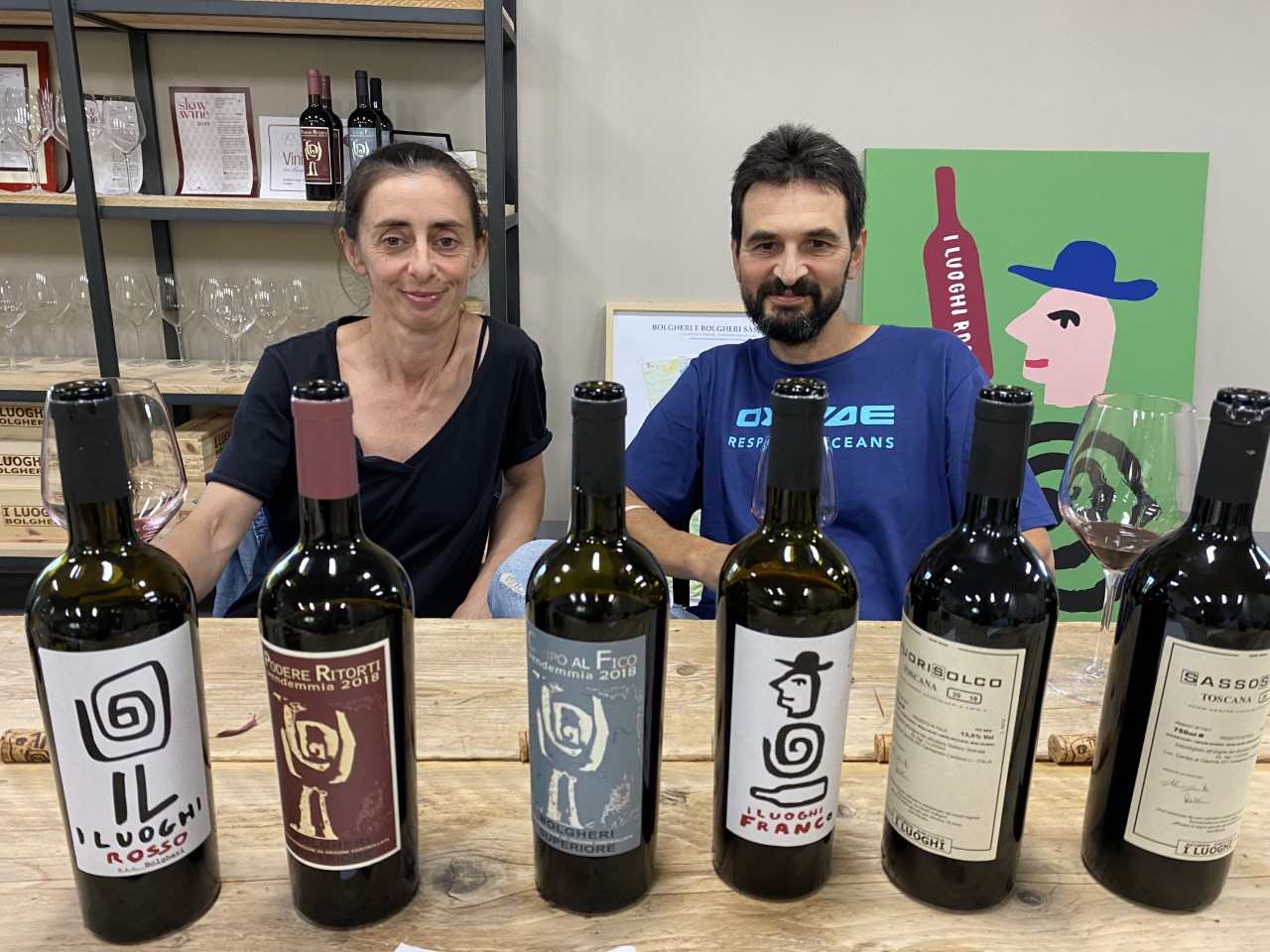
Paola del Fusco & Stefano Granata from I Luoghi estate. Photo by Michèle Shah.
The town of Bolgheri is a charming medieval village with a red brick castle that has been owned by the noble Gherardesca family since the 1200s. The first thing that strikes any visitor driving up to the ancient gates of Bolgheri is its famous Viale dei Cipressi, or Cypress Avenue, a straight 5 km long road from the coast lined with tall, majestic cypresses that leads straight to the Castle of Bolgheri.
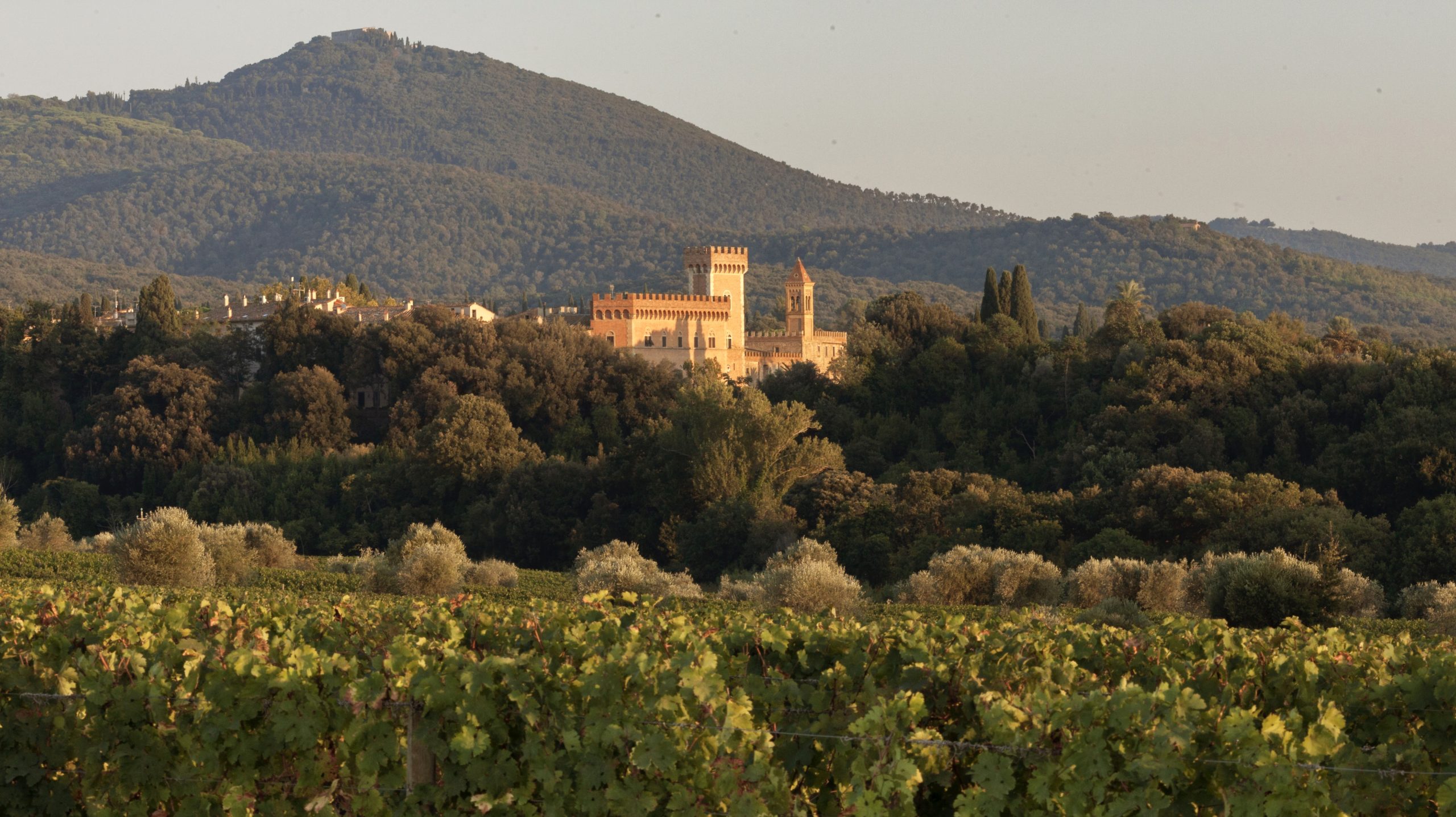
Bolgheri Castle, view from Ornellaia vineyards.
Along this impressive 5 km Viale dei Cipressi the consortium of Bolgheri and Bolgheri Sassicaia DOC recently (4.09.2021) hosted an international soiree ‘Bolgheri DiVino’, dedicated to its wines, inviting some 1000 guests to a seated four-course dinner at a table 1km long, in which 7.500 bottles were poured by 136 sommeliers into 3.500 glasses.
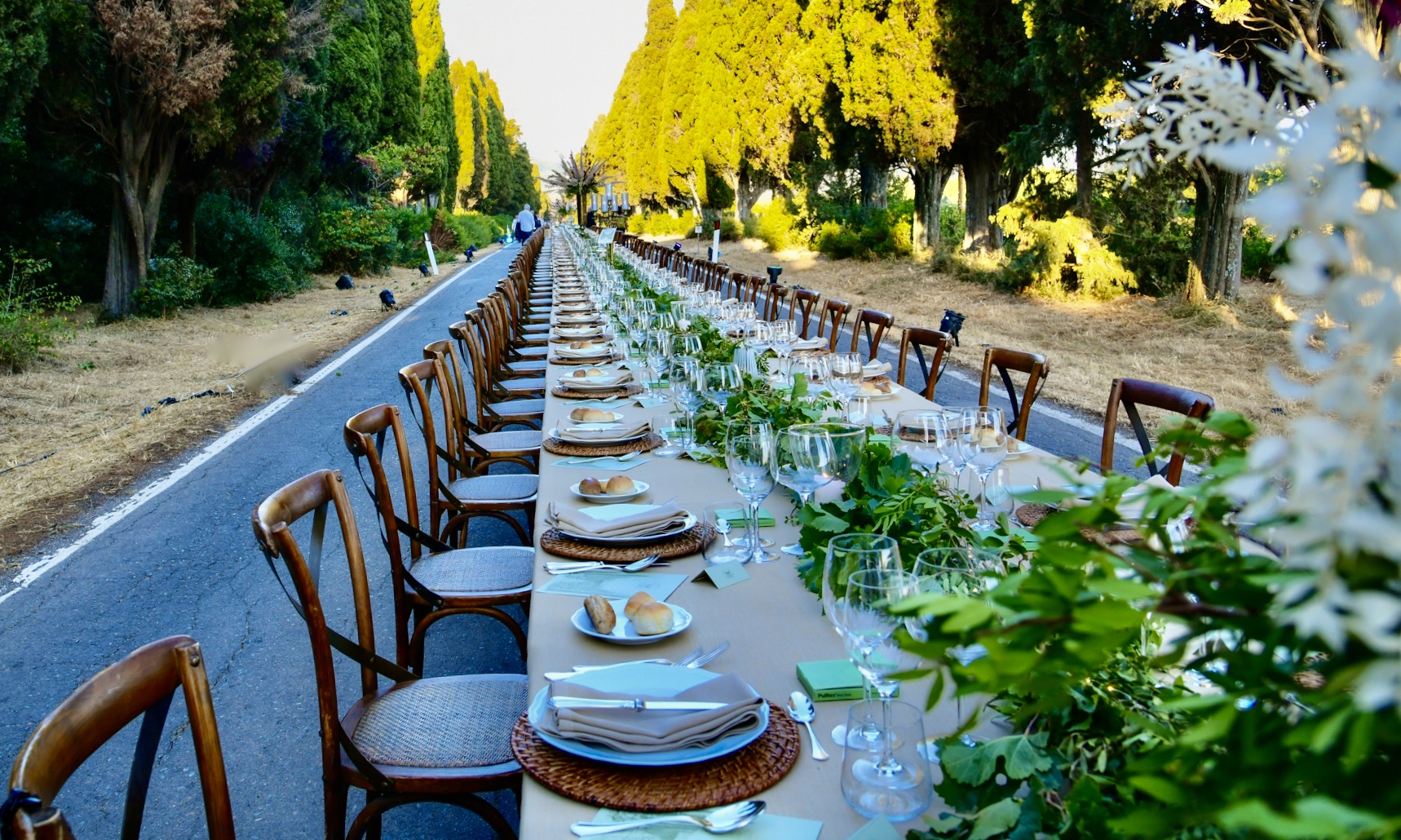
Bolgheri DOC dinner, along the 5 km Viale dei Cipressi highway, served 1,000 guests. Photo courtesy of Consorzio DOC Bolgheri & Sassicaia.
The surrounding hills are not particularly high, but dense Mediterranean shrubland and woods, ideal land for the ‘cinghiale’ – wild boar which is cooked to perfection and constitutes a favorite in the local Bolgheri cuisine, along with the famous Bistecca Toscana (Tbone steak minimun 1.5 kg each), are well suited to the structured red wines of the area. You can get a fabulous ‘Bistecca Fiorentina’ at ‘Il Macello di Bolgheri. For more eating options, see my listed suggestions.
If you feel like venturing further down the Tuscan coast, drive 50 km south of Bolgheri down the coast to Piombino, from here you can take the ferry over to the island of Elba where Napoleon was exiled to in the 19th century. The ferry departs several times a day and is an hour’s cruise away.
Two Elban wineries to visit are the more traditional producer Antonio Arrighi, native of Elba and the more modern Tenuta delle Ripalte, the project of master winemaker, Piermario Meletti Cavallari, who used to be the owner of Grattamacco in Bolgheri. The estates differ greatly but are perfect examples of the potential of Elban wines.
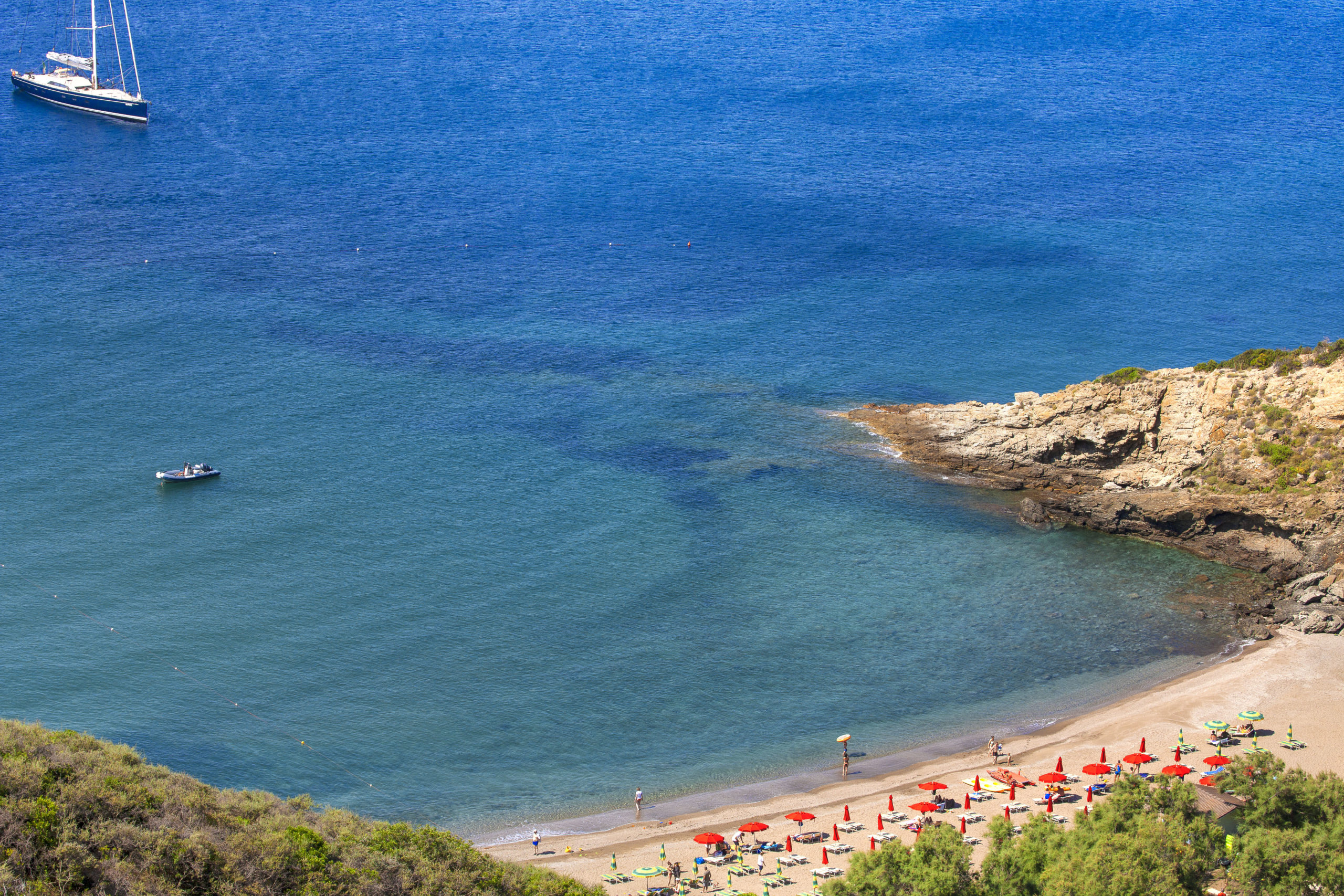
Tenuta delle Ripalte beach. Photo by Michèle Shah.
If you’re wined and dined out and in need of a spot of relaxation and further exploration hop over from the Tuscan coast to the island of Giannutri, to enjoy the amazing beauty of the nature, and its natural sea reserve which offers great deep-sea diving and ancient roman excavations.
Buon appetito and buon viaggio!
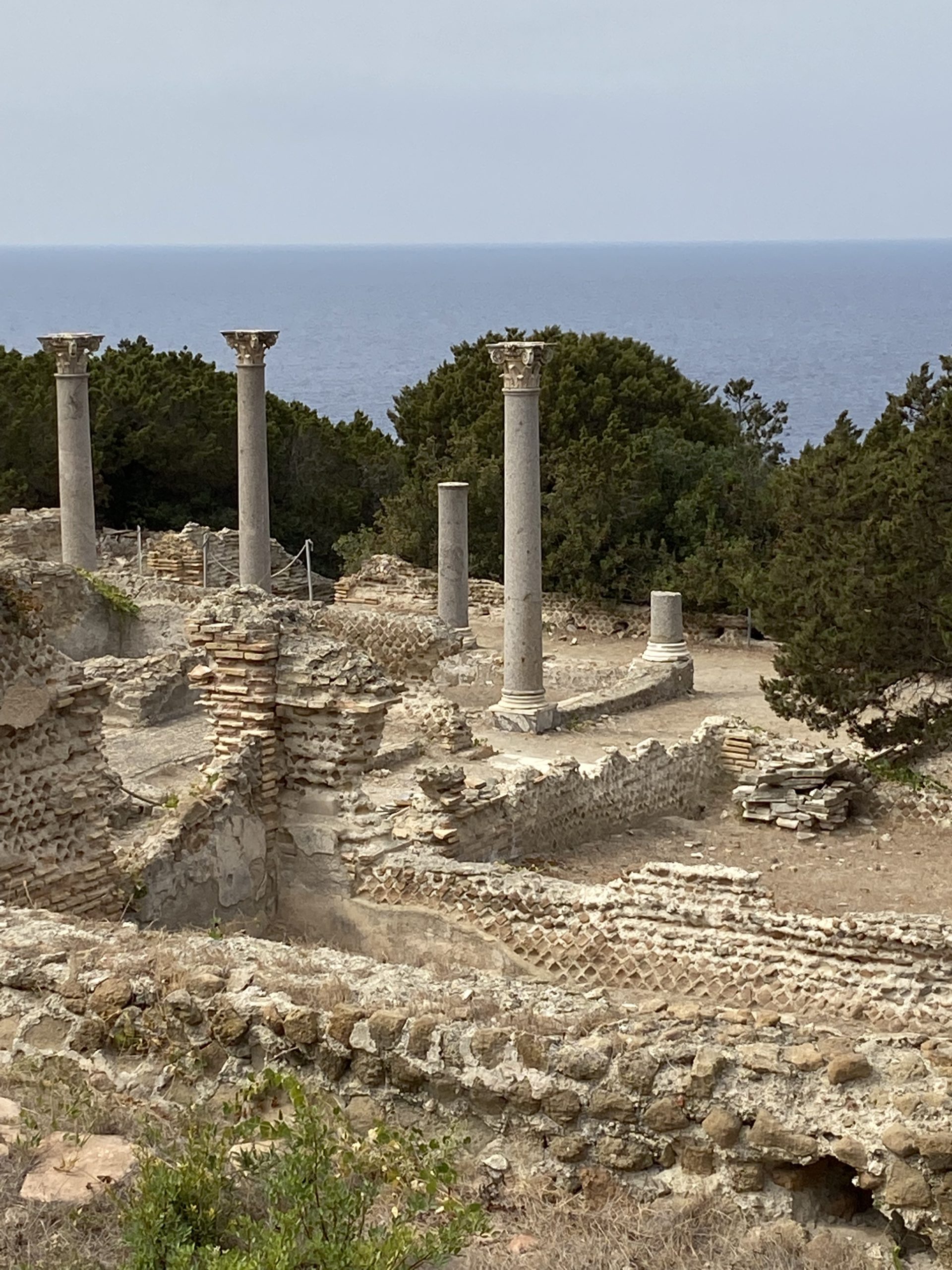
Giannutri Roman Villa Domizia II Century a.d. Photo by Michèle Shah.
The Territory of Bolgheri
Total appellation in hectares: 1.350 ha.
Number of Wineries: 65
Bottles produced in the DOC: 6.533.359 (vintage 2020)
Maximum height of Vineyards: 350 m a.s.l.
Dimensions of the DOC: 13 km in length by 7 in width
Some suggested winery visits:
Ornellaia
https://www.ornellaia.com/it/vini/
Le Macchiole
https://www.lemacchiole.it/en/home.html
Michele Satta
http://www.michelesatta.com/
Donna Olimpia 1898
www.donnaolimpia1898.it
Tenuta Argentiera
www.argentiera.eu/it
Le Crocine Winery
www.lecrocine.it
I luoghi winery
www.iluoghi.it
Wineries on Elba:
Antonio Arrighi
http://www.arrighivigneolivi.it
Fattoria delle Ripalte
www.fattoriadelleripalte.it
Restaurants:
Michelin starred La Pineta (fish) Restaurant – Marina di Bibbona (by the sea)
href=”http://www.lapinetadizazzeri.it/LaPineta/Home.html”>www.lapinetadizazzeri.it/LaPineta/Home.html
La Cesarina – Castagneto Carducci
www.lacesarina.com
Il Macello di Bolgheri
www.ilmacellodibolgheri.it
Osteria Enoteca San Guido – Bolgheri
https://www.enotecasanguido.com
Accommodation:
Poggio ai Santi – San Vincenzo
https://poggioaisanti.com
Relais dei Molini – Castagneto Carducci
https://www.relaisdeimolini.it
Seaside Escapes on the Archipelago of Tuscany
Giannutri – Animosque Family
www.animosque.it
Fattoria delle Ripalte – Elba
www.fattoriadelleripalte.it
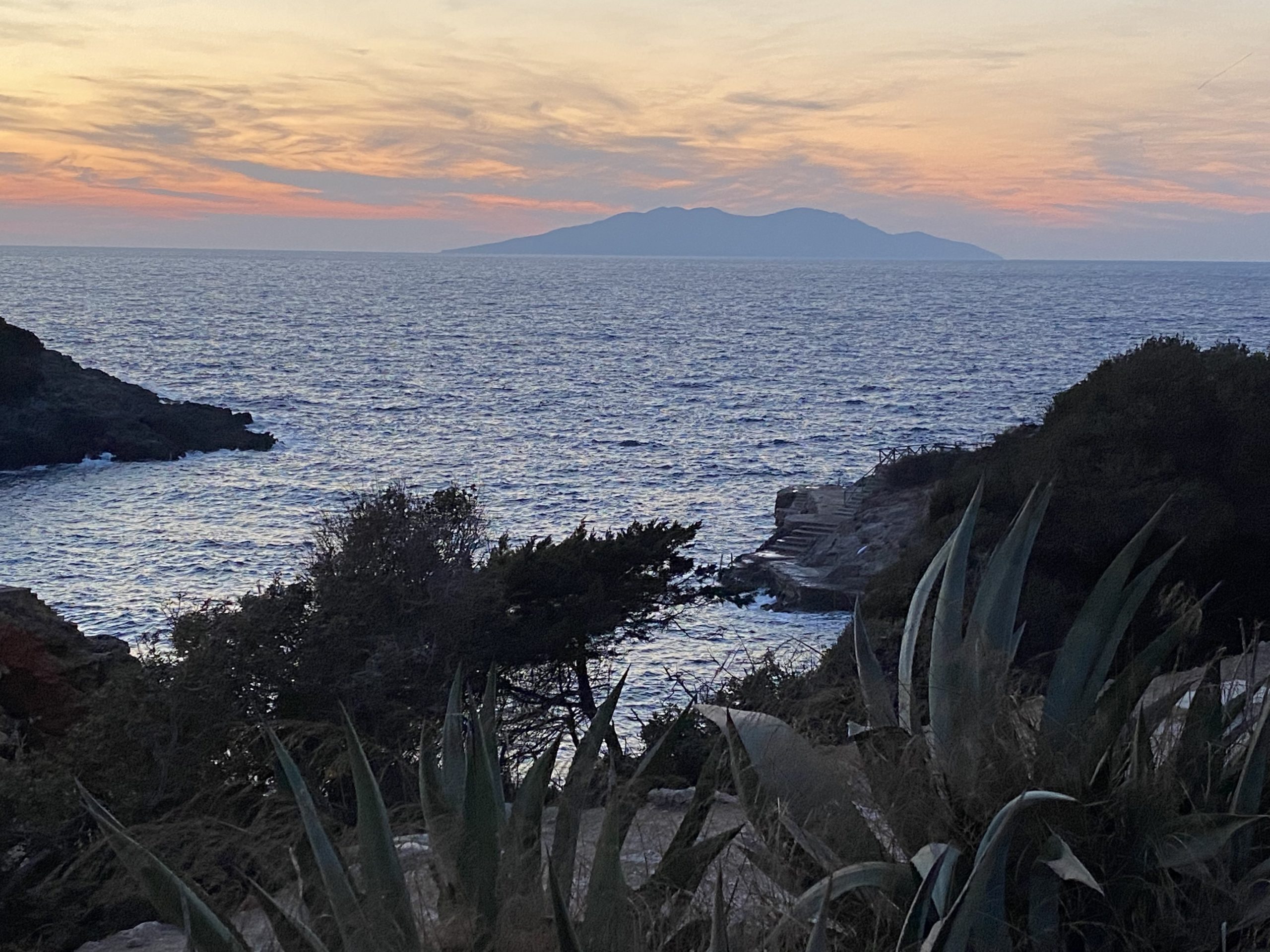
Sunset at Animosque with the island of Giglio on the horizon. Photo by Michèle Shah.
Michèle Shah is a marketing consultant, and a wine critic based in Italy for over 30 years, specialized in promoting Italian wines and food to export markets. Additionally, she is the originator of the innovative B2B formula registered under Speedtasting®. Since 2002 she has been consulting to the Italian wine trade, selecting international wine buyers and organising tasting events and workshops held at Italian trade events, such as Vinitaly Italy’s most important wine trade show; Winett in Venice, Maremmawineshire, Porto Cervo Wine Festival; Grandi Langhe Event, all aimed at presenting Italian wines and their producing regions to international wine importers and buyers.
For over ten years Michèle Shah has been organizing on behalf of Italy’s regional consorzio’s, wine tastings, seminars and educationals on Italian wine and its regions of production for international press and international wine buyers.





